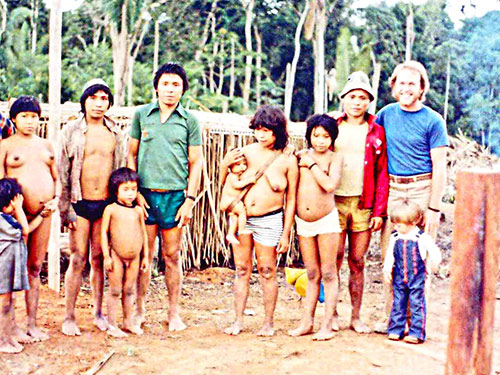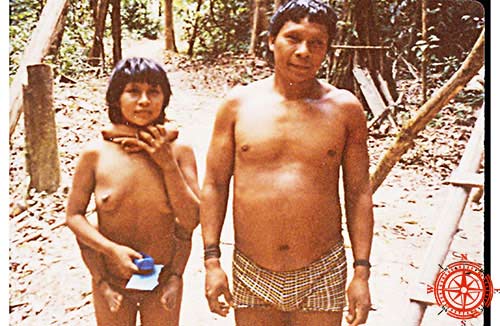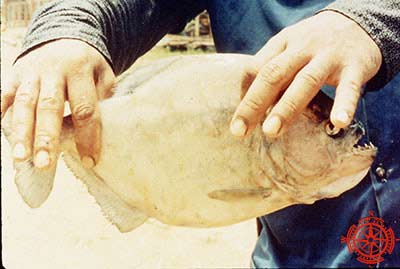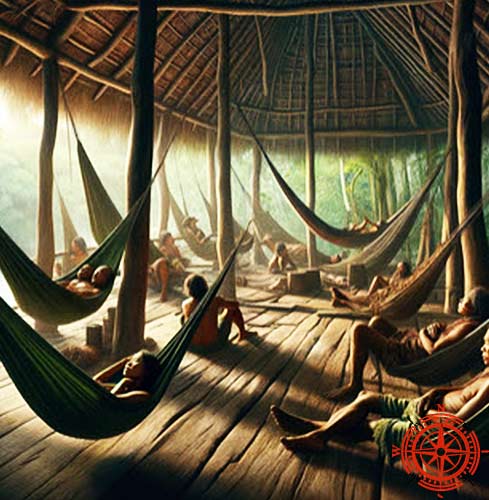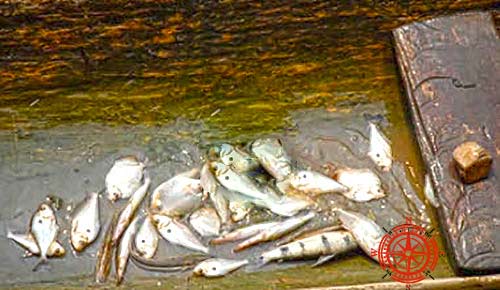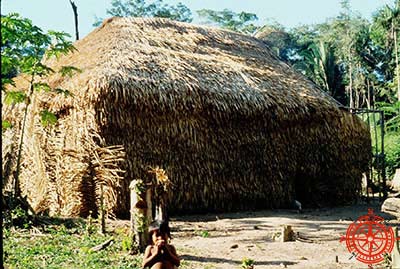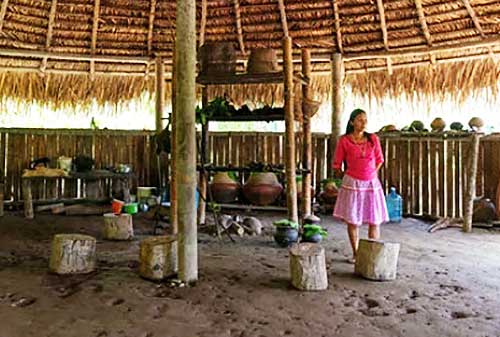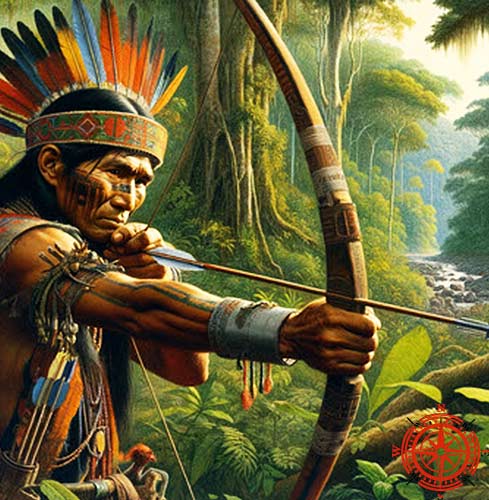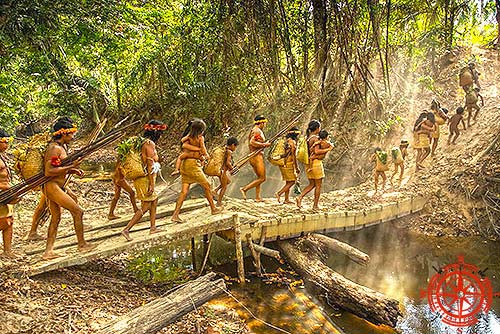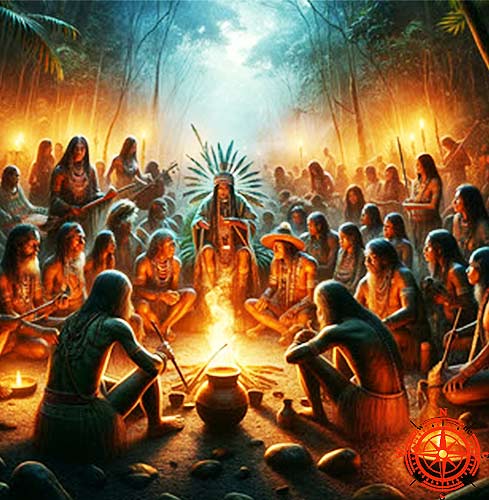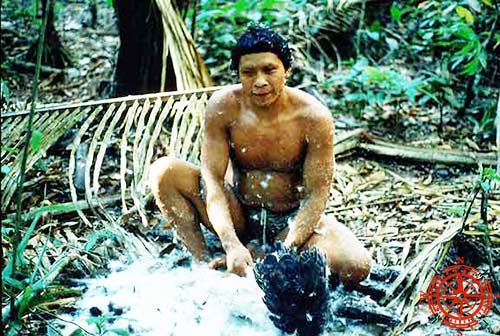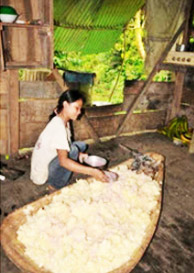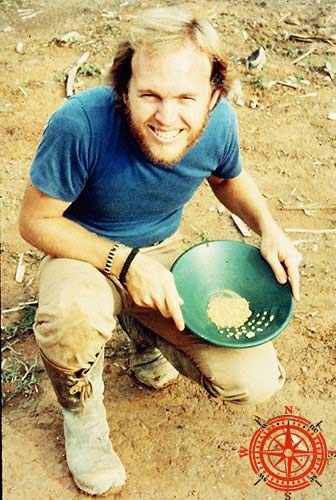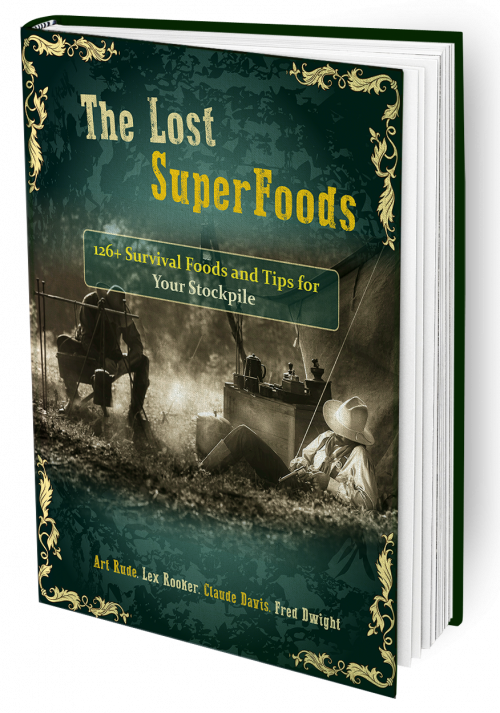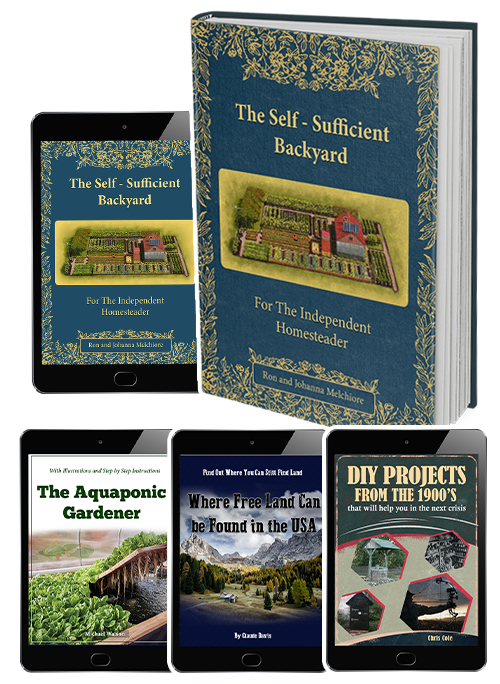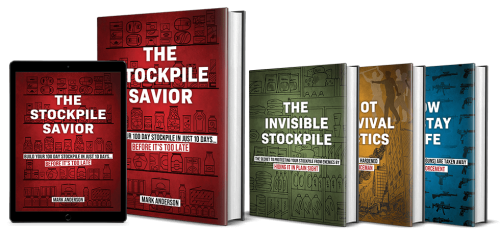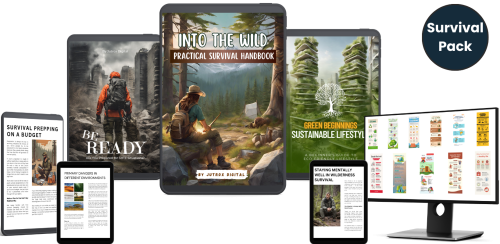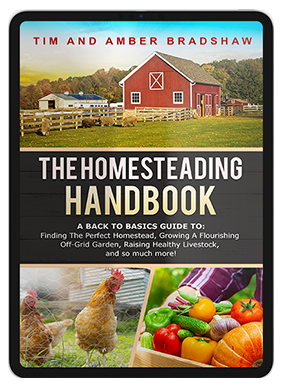- Home
- Natives
Amazon Native
Secret Survival Strategies
Introduction to Amazon Native
Secret Survival Strategies
Welcome to this page about Amazon Native secret survival strategies. I lived, first, in an extremely remote part of the Amazon Jungle in Brazil. I accidentally met an uncontacted tribe of Natives that lived near our new camp. Fortunately, they were friendly.
I spent just over a year living there. I had the opportunity to spend days at a time with this tribe. I even lived in their home with them once in a while. The survival (surthrival) techniques they taught me were unbelievable. That was my introduction to the Amazon.
I remained in the Brazilian Amazon jungle for more than 4 years. I met many other Natives and always enjoyed our conversations, often using only hand gestures and facial expressions to get the point across.
A few years later, I move to Ecuador to prospect for gold. I ended up making several important commercial gold discoveries. I lived near, and inter-acted with a variety of Indigenous tribes. Each tribe taught me new survival techniques.
I remained working the the Ecuadorian jungles for more than 11 years. I had the opportunity to make friends, conduct transactions and hire Natives as guides for my expeditions. I also had the chance to learn a whole lot more about secret survival strategies.
We hiked, camped, hunted and hung out together. Over the years, I learned so many little-known or secret survival strategies from them. I have had many dozens of close Native friendships. They even taught me how to use a blow gun!
Here are some of the secret survival strategies I learned from them...
The Use of
Awareness in Amazon Native Secret Survival Strategies
In the realm of modern-day prepping and survivalism, the acute awareness practiced by Amazonian Natives offers invaluable lessons. This heightened sense of environmental awareness, honed through generations of living in one of the most challenging ecosystems on Earth, provides a template for survival skills applicable in various scenarios, from wilderness expeditions to urban emergencies.
- Sensory Enhancement for Environmental Awareness: Just like Amazonian Natives who can identify distinct sounds and movements, modern preppers and survivalists can benefit from enhancing their sensory awareness.This involves training to recognize subtle changes in the environment, such as shifts in wind patterns, sounds of wildlife, and even changes in the air's scent. Such skills can signal approaching dangers, shifts in weather, or the presence of resources like water and food sources.
- Wildlife Knowledge for Resource Tracking: Understanding wildlife behavior, a key aspect of Amazonian Native awareness, can be crucial for preppers. For instance, the behavior of birds can indicate the presence of water bodies or signal a looming threat. Similarly, tracking animal movements can guide survivalists to food sources and safe zones.
- Stealth and Camouflage Skills: Just as natives blend seamlessly with their surroundings for hunting or evasion, preppers should learn the art of moving quietly and unobtrusively. This skill is essential not just in wilderness settings but also in urban environments during times of chaos or unrest.
- Mental Vigilance and Adaptability: Awareness extends beyond the physical; it encompasses mental preparedness. This means maintaining a state of calm vigilance, ready to adapt to changing situations. It's about being mentally prepared for the unexpected and having the resilience to face and overcome challenges.
- Strategic Planning Based on Environmental Cues: Amazonian Natives plan their activities based on environmental signals. Modern preppers can apply this by learning to read natural indicators for strategic planning, like finding shelter before a storm or knowing when to conserve resources.
- Community Awareness and Communication: Natives' awareness is often a communal effort, with shared knowledge and communication key to survival. In modern prepping, building a network of like-minded individuals for sharing information and resources can significantly enhance survival chances.
- Embracing Technology with Traditional Knowledge: While honoring native wisdom, modern survivalists can also embrace technology for enhanced awareness, like using weather apps, GPS, and emergency communication devices.
By integrating the deep awareness practices of Amazonian Natives with modern knowledge and technology, preppers and survivalists can significantly enhance their preparedness and resilience in the face of various survival scenarios.
The Use of
Secure Homes in Amazon Native Secret Survival Strategies
The concept of secure homes, as practiced by jungle tribes with single, small entry points for safety, is highly relevant to modern-day preppers and survivalists. This strategy, focusing on controlled access and defensible spaces, can be adapted to enhance home security in various scenarios, ranging from natural disasters to societal breakdowns.
- Controlled Access Points: Just as jungle tribes use a single, small entry to
control access, preppers can implement similar strategies. This involves
minimizing entry points into the home and reinforcing them. Strong,
lockable doors and windows, possibly with bars or reinforced glass, can
serve as effective deterrents against intruders. This is a major issue with Amazon Native Secret Survival Strategies.
- Visibility and Surveillance: The advantage of a single entry point is enhanced visibility and surveillance. Modern technology like security cameras or motion sensors can extend this visibility, allowing preppers to monitor their surroundings effectively. This is particularly crucial in scenarios where help from law enforcement may not be readily available.
- Layered Defense: A secure home for a prepper or survivalist isn't just about the entry point; it’s about layered defense. This includes outer perimeter defenses like fences or walls, mid-perimeter defenses like security lights and alarm systems, and inner-perimeter defenses like secure doors and safe rooms.
- Emergency Preparedness: Secure homes also mean being prepared for various emergencies. This involves having supplies like food, water, medical kits, and power sources stored safely and accessibly. Fire safety measures, including extinguishers and smoke detectors, are also vital components of a secure home.
- Adaptability and Training: Just as tribes adapt their homes to their environment, preppers must adapt their security measures to their specific situations. This might mean different strategies for urban versus rural homes. Additionally, all household members should be trained in emergency protocols and the use of security features.
- Community Networking: Security is also about community. Building relationships with neighbors and forming local networks can provide mutual support and additional security layers. This echoes the communal approach to security seen in tribal living.
Adapting the tribal concept of secure homes involves a holistic approach to safety, combining physical fortifications, technological enhancements, emergency preparedness, adaptability, and community networking. By doing so, preppers and survivalists can create a secure environment that not only deters threats but also provides a sustainable living space during crises.
Amazon Native Use of
Tools and Weapons in Their
Secret Survival Strategies
The use of tools and weapons, as exemplified by Amazonian Natives, is a
crucial aspect of survival that resonates deeply with modern-day preppers and
survivalists. The ability to create and utilize tools and weapons from natural
resources reflects a profound understanding of the environment and a readiness
to adapt to various survival situations. Copy the Amazon Native Secret Survival Strategies with your tools and weapons.
- Self-Sufficiency in Tool Making: One of the primary lessons from natives is the ability to create tools using available natural resources. This skill is essential for modern preppers and survivalists, especially in scenarios where access to manufactured tools might be limited. Learning to fashion tools like hooks, spears, or even simple utensils from wood, bone, or stone can be invaluable in a survival situation.
- Weaponry for Hunting and Defense: Just as natives use bows and arrows or blowguns for hunting, modern survivalists can benefit from mastering primitive weapons. These skills are not only useful for procuring food but also serve as a means of defense when modern firearms are not available or practical.
- Maintenance and Repair Skills: The maintenance of tools and shelters using natural materials is another critical skill. In a long-term survival scenario, the ability to repair shelters, clothing, and tools can mean the difference between life and death. This includes skills like sewing, woodworking, and even basic blacksmithing.
- Stealth and Accuracy: The natives' use of weapons like blowguns demonstrates the importance of stealth and accuracy. Modern preppers can apply these principles by practicing stealthy movement and precision in using their tools and weapons, be it for hunting or self-defense.
- Adaptation and Improvisation: The ability to improvise tools and weapons from what is available is a significant survival skill. This involves creative thinking and a deep understanding of materials and their properties, allowing survivalists to adapt to their environment effectively.
- Knowledge of Local Flora and Fauna: Understanding local ecosystems, including plant properties and animal behavior, is vital. This knowledge enables the creation of tools and weapons that are suitable for specific environments and targets.
- Training and Preparedness: Regular practice and training in the use of these tools and weapons ensure preparedness and proficiency. This is especially important for tools that require skill and precision, such as bows and spears.
The skills of tool and weapon making, maintenance, and use are integral to survival strategy, echoing the practices of Amazon Native Secret Survival Strategies.
These skills foster self-sufficiency, adaptability, and resilience, crucial for modern-day preppers and survivalists in various survival scenarios.
If you would like to know more about the Amazon Cinta Larga Native tribe with whom I interacted for more than a year, you can click here to see more of their history.
The Use of Camouflage in Amazon Native Secret Survival Strategies
The art of camouflage, mastered by indigenous peoples like Amazonian Natives, is a vital skill for modern-day preppers and survivalists. In a world where being unseen can mean the difference between success and failure, or even life and death, understanding and applying camouflage techniques is essential.
- Understanding Camouflage Principles: Camouflage is more than just wearing a patterned outfit; it's about blending with the environment. This involves understanding color, texture, and pattern. Natives blend with their surroundings by mimicking the colors and patterns of the forest. Similarly, preppers must choose camouflage that matches their specific environment—be it woodland, urban, or desert.
- Breaking Up Silhouettes: One key aspect is breaking up the human silhouette, as humans are easily recognizable by their shape. Natives use leaves and mud to distort their outline. Modern survivalists can use camo gear, face paints, and natural elements like branches or grasses to disrupt their outline.
- Movement and Stealth: Camouflage isn't just visual; it's also about movement. Quick, sudden movements can give away a position. Indigenous hunters move slowly and deliberately to avoid detection. Preppers should practice moving quietly and with purpose to avoid drawing attention.
- Use of Natural Elements for Cover: Just as natives use vegetation for concealment, preppers can use natural elements like bushes, trees, and rocks for cover. This involves understanding how to position oneself and how light and shadow play a role in visibility.
- Camouflage for Gear and Shelter: It's not just about personal camouflage. Tents, backpacks, and other gear should also be camouflaged or covered with natural materials to blend in with the surroundings.
- Urban Camouflage: In urban environments, camouflage is about blending in with the crowd and environment. This might mean dressing to match the local populace or using vehicles and structures for concealment.
- Training and Practice: Like any skill, effective camouflage requires practice. This means not only learning the techniques but also practicing them in various environments and conditions to understand what works best.
- Ethical Considerations and Legal Compliance: While practicing camouflage, it's important for survivalists to consider the ethical implications and ensure they are compliant with local laws, especially in terms of hunting and trespassing.
Camouflage is a critical skill for modern preppers and survivalists, rooted
in the ancient wisdom of indigenous peoples. By effectively blending into their
surroundings, survivalists can significantly enhance their stealth, safety, and
success in various scenarios. The Amazon Native Secret Survival Strategies really apply here.
The Use of Communication in Amazon Native Secret Survival Strategies
The sophisticated communication methods of Amazonian Natives, utilizing natural sounds like bird and monkey calls, provide valuable insights for modern-day preppers and survivalists. In survival situations, effective communication is crucial, whether it's for coordinating efforts, signaling for help, or staying informed about potential dangers.
- Understanding Non-Verbal Communication: Just as natives use animal sounds for communication, preppers can develop non-verbal methods like hand signals or visual markers. This can be especially useful for stealth situations where silence is key.
- Radio Communication Skills: In today's world, radio communication is vital for survivalists. Learning how to use ham radios, CB radios, or even walkie-talkies can ensure ongoing communication during emergencies, especially when conventional systems fail.
- Code Language and Encryption: Drawing inspiration from natives' ability to encode messages in animal sounds, preppers can develop their code languages or use encryption for secure communication. This is particularly useful in scenarios where privacy is paramount.
- Community Networking: Effective communication extends to establishing networks within a community. Regularly interacting with fellow preppers and survivalists can create a support system for information exchange and assistance during crises.
- Emergency Signals and Protocols: Preppers should be versed in emergency signaling techniques, such as using flares, smoke, or mirrors. This knowledge can be crucial for attracting attention in rescue situations.
- Staying Informed: Communication isn't just about talking; it's also about listening. Keeping informed through various channels like shortwave radios or emergency broadcasts can provide critical updates during disasters.
- Training and Practice: Regular practice with communication tools and techniques is essential. This includes understanding the limitations and advantages of different communication modes in various environments.
- Adaptability and Improvisation: In a survival scenario, the ability to adapt and improvise is crucial. This means being ready to use whatever means available to communicate, whether it's creating noise, using written messages, or signaling with lights.
In essence, for modern preppers and survivalists, communication is a multi-faceted skill that encompasses both high-tech methods and age-old techniques. By blending traditional knowledge with modern technology and practicing regularly, survivalists can ensure they stay connected and informed, no matter the circumstances.
The Use of Physical Conditioning in
Amazon Native Secret Survival Strategies
Physical conditioning, as exemplified by the endurance and agility of Amazonian Natives during hunting expeditions, is a fundamental aspect for modern day preppers and survivalists. The ability to navigate challenging terrains, endure physical stress, and maintain stamina is as crucial in survival situations today as it has been throughout human history.
- Endurance and Stamina: Just as natives can traverse through the jungle for hours, modern preppers need to build endurance. This is crucial not only for navigating through difficult terrains but also for carrying out necessary tasks over extended periods during emergencies.
- Strength Training: Physical strength is vital for various survival tasks, such as building shelters, chopping wood, or even in self-defense scenarios. Regular strength training, therefore, forms a critical part of a prepper’s fitness regimen.
- Flexibility and Mobility: The ability to move swiftly and adapt to different physical scenarios is vital. Flexibility and mobility exercises help in preventing injuries and improving overall physical responsiveness.
- Cardiovascular Fitness: Good cardiovascular health is essential for prolonged physical activities. Cardio exercises like running, hiking, swimming, or even brisk walking are key to building a heart and lung capacity that can endure survival challenges.
- Functional Fitness: Preppers should focus on functional fitness - exercises that mimic real-life activities. This includes lifting irregular weights, climbing, or crawling, which are more applicable in survival situations than conventional gym workouts.
- Mental Resilience: Physical conditioning is as much about mental toughness as it is about physical strength. The ability to push through fatigue and discomfort is essential for survival, echoing the mental resilience seen in native hunters.
- Regular Training and Consistency: Consistent training is key. This doesn’t mean extreme workouts every day but rather a balanced, regular routine that steadily builds physical capabilities.
- Skills Training: Beyond general fitness, survivalists should also train in specific skills like swimming, climbing, and self-defense. These skills can be crucial in various emergency scenarios.
Physical conditioning for preppers and survivalists is about more than just being fit; it's about preparing the body and mind for the wide array of challenges one might face in survival scenarios. By adopting a comprehensive approach to physical training, modern survivalists can ensure they are as prepared as possible for whatever challenges they may face.
The Use of Tracking Skills in Amazon Native Secret Survival Strategies
Tracking skills, an expertise profoundly mastered by indigenous trackers, are invaluable for modern-day preppers and survivalists. These skills enable one to read the environment, understand the behavior of both humans and animals, and make informed decisions based on subtle signs left in nature.
- Understanding Terrain and Signs: Expert trackers read various signs left on the terrain. Preppers can train to recognize disturbances in natural patterns like broken twigs, displaced rocks, or footprints. This skill is crucial for navigation, hunting, and identifying potential threats or resources.
- Human Behavior and Security: For preppers, tracking skills are not just about tracking wildlife but also about understanding human behavior through tracks. This can be critical in avoiding unwanted encounters or in search and rescue operations. Learning to determine the age of tracks can help preppers understand how recently someone has passed through an area, which is crucial in maintaining security and awareness.
- Wildlife Tracking for Sustenance: Understanding animal behavior and tracking is key to hunting and foraging. By reading animal tracks, preppers can locate potential food sources or avoid dangerous wildlife. This includes recognizing specific animal species, their habits, and their usual haunts.
- Tracking as a Tool for Sustainable Living: Beyond survival, tracking skills can contribute to sustainable living practices. Ethical hunting and foraging, guided by expert tracking, ensure that wildlife is not over-exploited, echoing traditional practices of living in harmony with nature.
- Environmental Awareness: Tracking fosters a deep connection with the environment. This awareness can help preppers in understanding weather patterns, navigating through unfamiliar territories, and even in natural disaster scenarios, where understanding the landscape is crucial for survival.
- Integration with Modern Technology: While traditional tracking skills are invaluable, integrating them with modern technology like GPS systems can enhance a prepper's capabilities. This combination can lead to more efficient navigation and a better understanding of one’s surroundings.
- Training and Practice: Like any skill, tracking requires regular practice. This involves spending time in nature, observing, and learning from the environment. Workshops, books, and courses on tracking can provide foundational knowledge, but real-world experience is irreplaceable.
Tracking skills are a crucial component of a prepper's skill set, offering benefits in terms of security, food procurement, environmental awareness, and sustainable living. By honing these skills, modern survivalists can enhance their ability to adapt and thrive in a range of scenarios.
Conclusions about Amazon
Native Secret Survival Strategies
Writing this page brings back a lot of great memories. I loved my time living in the Amazon jungle and in my interactions with all of the different Native tribes. I learned so much about the importance of having secret survival strategies in life, and in general.
I hope you can take some of what I learned in the jungle and apply it to your own preparations for rough times that are already here, and are bound to grow worse.
Please keep searching the website for other vital details you can put to use in the near future.
Be sure to check out the "vital details" of our new
Survival Intelligence Blackfile.
